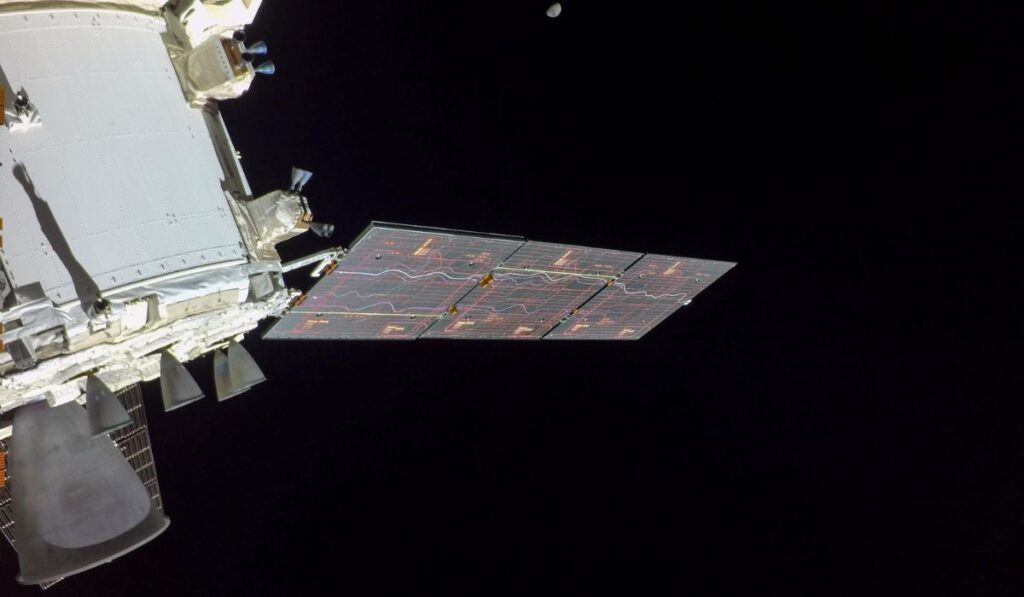Orion spacecraft to splashdown on Sunday, Dec. 11, off the Baja Coast.
The Orion spacecraft is on its last full day in space with splashdown off the Baja Coast near Guadalupe Island targeted for 11:39 a.m. CST (12:39 p.m. EST) on Sunday, Dec. 11.
Engineers conducted the final Artemis I in-space developmental flight test objective to characterize temperature impacts on solar array wings from plumes, or exhaust gases. Once the solar array wing was in the correct test position, flight controllers fired the reaction control system thrusters using opposing thrusters simultaneously to balance the torque and test a variety of firing patterns. Engineers will perform several additional flight test objectives after Orion splashes down in the water and before powering down the spacecraft.
The fifth return trajectory correction burn occurred at 2:32 p.m. CST, Saturday, Dec. 10. During the burn the auxiliary engines fired for 8 seconds, accelerating the spacecraft by 3.4 mph (5 feet per second) to ensure Orion is on course for splashdown. The sixth and final trajectory correction burn will take place about five hours before Orion enters Earth’s atmosphere.

On Orion’s return to Earth, NASA’s Tracking and Data Relay Satellite (TDRS) will facilitate communications for the final return trajectory correction burn, spacecraft separation, re-entry through the Earth’s atmosphere and splashdown. Shortly before the service module separates from the crew module, communication will be switched from NASA’s Deep Space Network to its Near Space Network for the remainder of the mission. Located in geosynchronous orbit about 22,000 miles above Earth, TDRS are used to relay data from spacecraft at lower altitudes to ground antennas. During re-entry, the intense heat generated as Orion encounters the atmosphere turns the air surrounding the capsule into plasma and briefly disrupts communication with the spacecraft.
Recovery forces have arrived on location off the coast of Baja where they will stand by to greet the spacecraft after its re-entry back into the atmosphere at 25,000 mph. On the ship, personnel are running through preparations and simulations to ensure the interagency landing and recovery team, led by Exploration Ground Systems from Kennedy Space Center in Florida, is ready to support recovery operations. The team consists of personnel and assets from the U.S. Department of Defense, including Navy amphibious specialists and Space Force weather specialists, and engineers and technicians from Kennedy Space Center in Florida, Johnson Space Center in Houston, and Lockheed Martin Space Operations.

Teams will recover Orion and attempt to recover hardware jettisoned during landing, including the forward bay cover and three main parachutes. A four-person team of engineers from Johnson will be aboard the U.S. Navy recovery ship using “Sasquatch” software to identify the footprint of hardware released from the capsule. The primary objective for the Sasquatch team is to help the ship get as close as possible to Orion for a quick recovery. A secondary objective is to recover as many additional elements as possible for analysis later.
Just after 2 p.m. CST Dec. 10, Orion was 113,453 miles from Earth and 239,432 miles from the Moon, cruising at 3,375 miles per hour.
Live coverage of Orion’s reentry and splashdown will begin at 11 a.m. EST on NASA TV, the agency’s website, and the NASA app. A post-splashdown briefing is scheduled for about 3:30 p.m.

